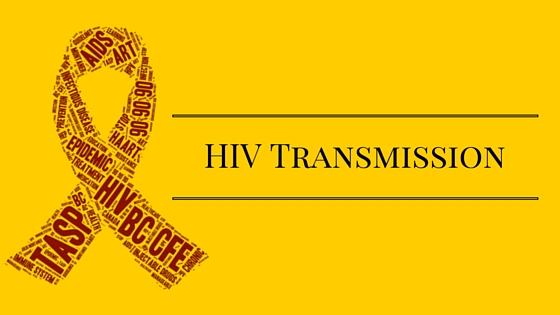
How is HIV Transmitted? HIV transmission cannot happen through any normal activities and there are certain set of specific activities that can lead to HIV transmission. Often it is seen that HIV transmission occurs if any infected syringe or needle is consumed or through sexual behaviors. The spread of HIV cannot be considered as simple one as it can only occur if the transfusion of body fluid has occurred from an HIV infected person. The body fluids are as follows:
- Breast milk
- Blood
- Vaginal fluids
- Vaginal fluids
- Semen (cum)
- rectal fluids
- Pre-seminal fluids
Whenever these above mentioned body fluids are communicated through any kind of damaged tissues or any mucous membranes or sometimes when it is directly injected in you through a syringe or needle or if you happen to use any infected syringe or needle the transmission is likely to occur.
Places where mucous membranes could be found
Vagina, mouth, rectum and penis are the places where you could found the membranes of mucous.
Test today, don’t delay
In case if you realized that some how you have been exposed to the virus of HIV then the first thing you should do is to go for testing. This testing could be done at the nearest healthcare counsel or in a private clinic or anywhere you are comfortable. There are several home kits too available by which these testing could be done and you can get these kits from any local chemist shop. These sites could be traced via HIV Testing and Care Services Locator run by government.
Reasons behind the transmission of HIV
Different countries have different reasons by which HIV is spread there like in United States through vaginal or anal sex it is spread the most.
Commonly the reason behind spreading this virus everywhere is due to unprotective sex habits like having sex without condoms, or having sex with someone who has been diagnosed as HIV positive. Anal sex is again another serious reason where receptive anal sex is treated more dangerous than inserting anal sex. Vaginal sex also comes under highly risky issues resulting in HIV transmission. Even after so much of awareness people end up in sharing syringes and needle and the result is HIV transmission.
These factors do not actively participate in spreading of HIV:
- Mother to infant while she conceive, during delivery or breastfeeding- it is not said that the risk involve is less if the pregnant mother is having HIV and is not taking medicine but it is also true if she will take medicines on time than the risk could be controlled.
- Stuck by HIV contaminated syringe- only health care people could get affected from it.
Risk cases where HIV could be transmitted
- During oral sex when someone is sucking the penis which in scientific term is called fellatio, licking the vagina or scientifically called cunnilingus etc. though oral sex are often considered as the safest sex pattern. The result may be adverse if ejaculation is done by an HIV positive man into his partner’s mouth.
- Utilizing HI contaminated blood, organs- the risk involved is extremely low as rigorous test takes place before receiving these organs.
- Consuming the food which is chewed or half eaten by HIV infected person- only the infant food could do that and hence the possibility is negligible.
- If HIV person bites- the risk is absent if the skin on the top is not broken.
- Deep smooching with bleeding gums HIV patients. In no regards it could be transmitted through saliva.
Things that do not spread HIV
HIV needs a host body to reproduce and cannot survive outside. It does not spread by:
- Through air and water
- Tears, sweat or saliva
- Mosquito or other insects bite
- Drinking fountains
- Sharing utensils, toilets, social kissing, shaking hands with HIV positive person never leads to the transmission of virus of HIV.
Shaking hands, hugging, sharing toilets, sharing dishes/drinking glasses, or closed-mouth or “social” kissing with someone who is HIV-positive does not lead to the transmission of HIV virus. If body fluids have not exchanged than this transmission cannot occur.
Get yourself treated to control risk is the best measure you can take. Continue with ART therapy regularly and take necessary step to save your uninfected partner.
Biggest confusion
Often people think that HIV and AIDS are similar but both the term belongs to the same problem. HIV is the term given to the virus of the disease and AIDS is the final stage of this virus. Today with the development of ART therapy than there are less chances that HIV positive turns to AIDS and will control the chances of transmitting to others too!

